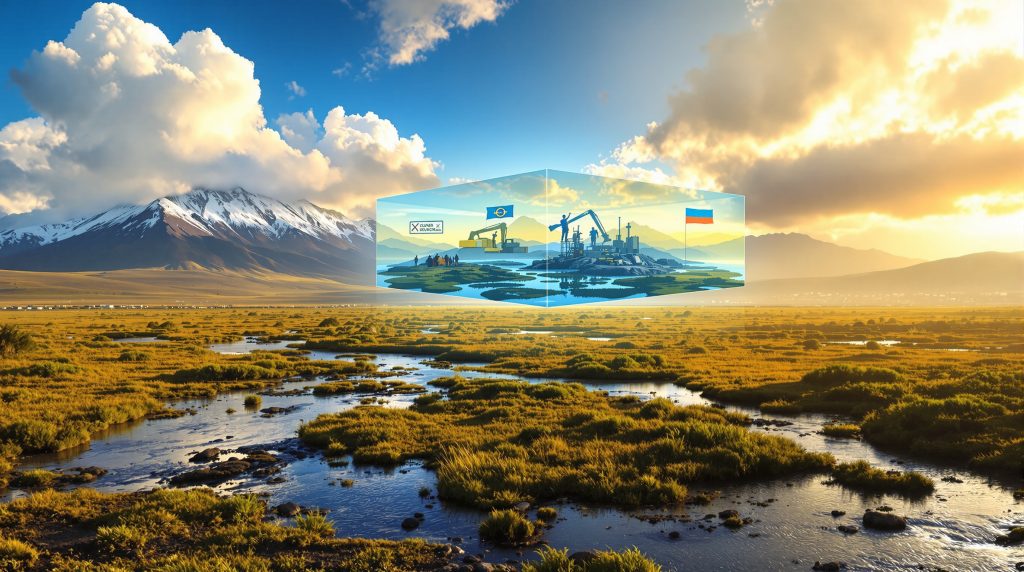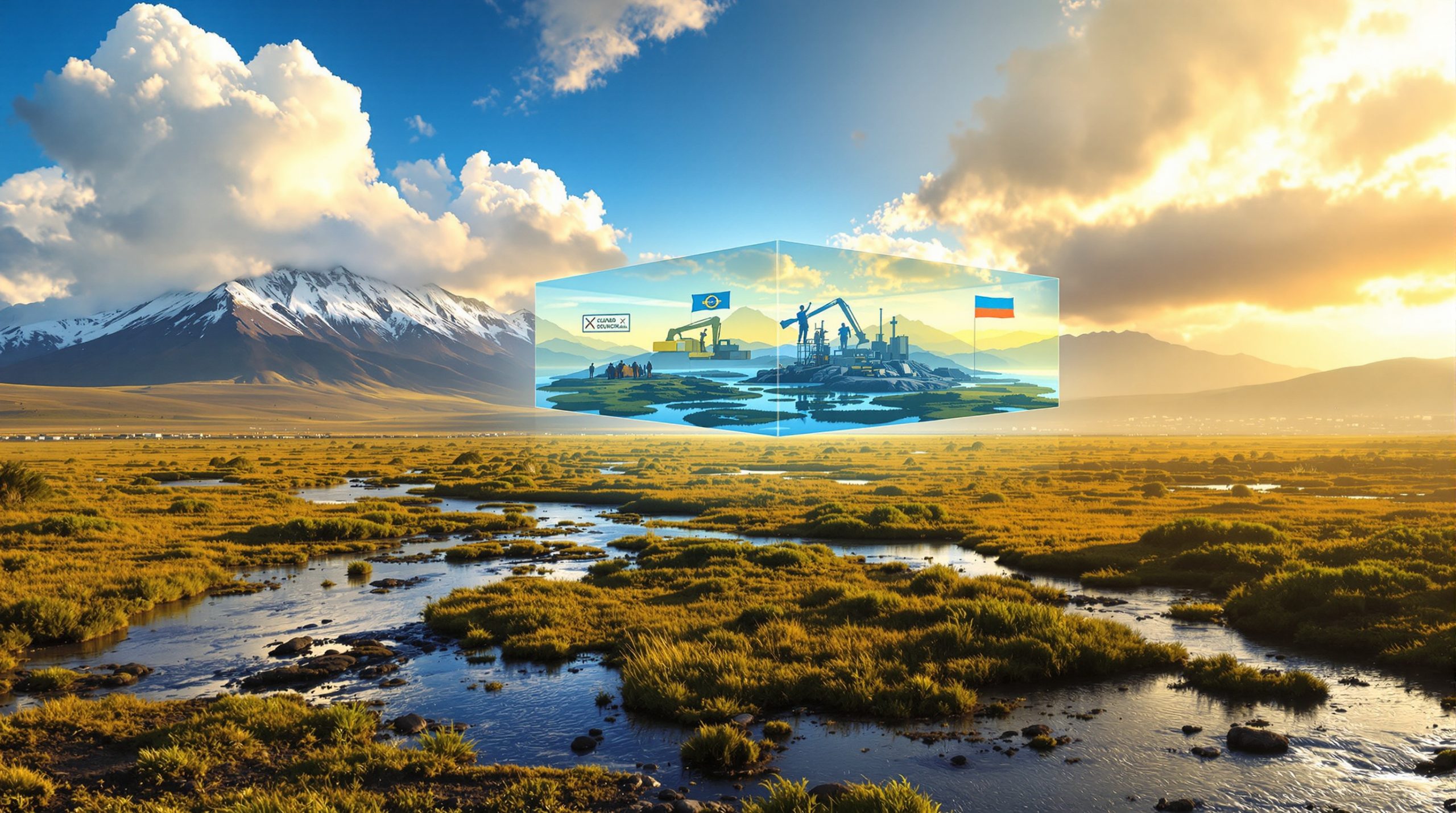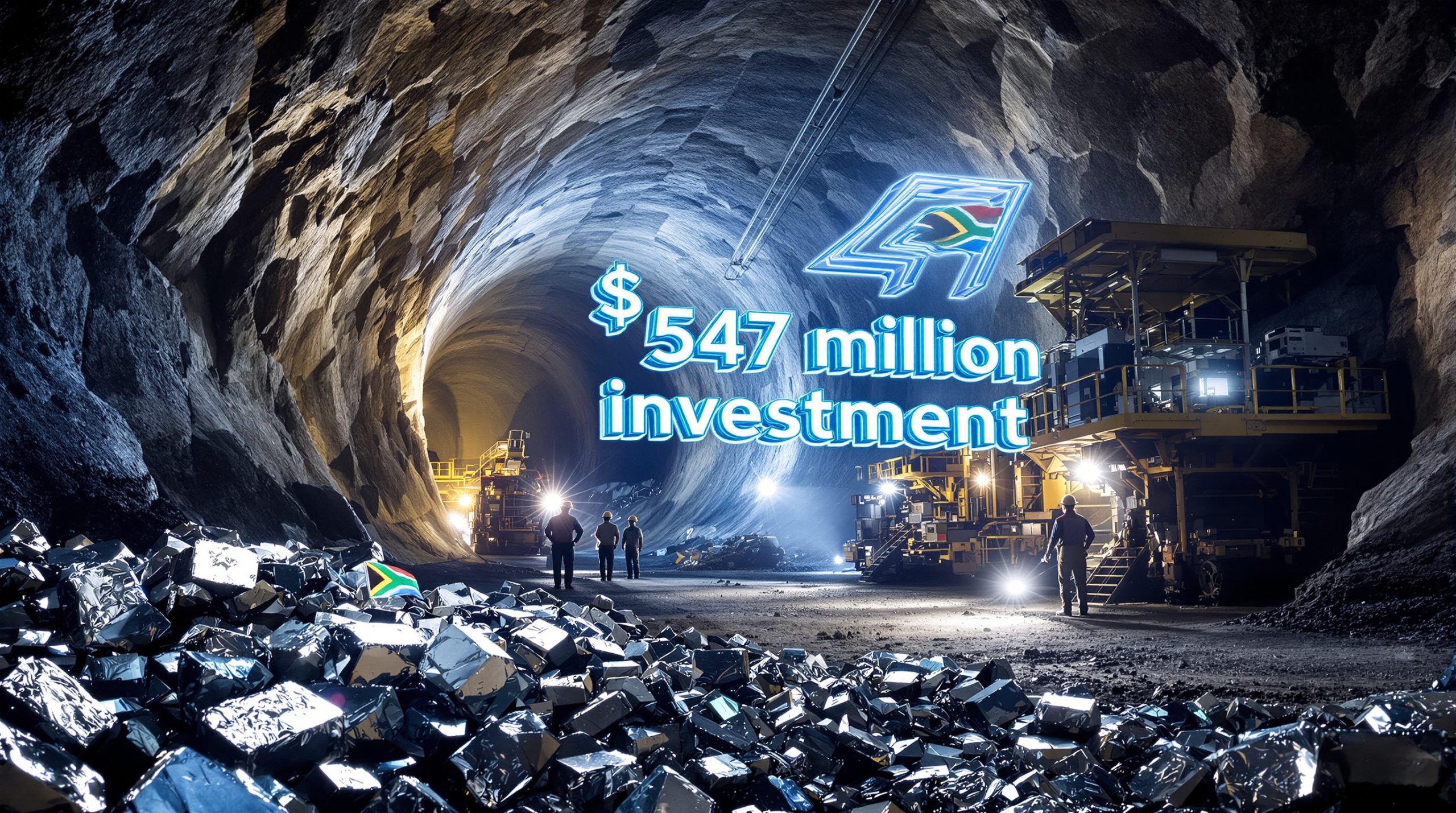Ecuador's Gold Mining Controversy: Environmental Protection Halts Loma Larga Project
The Ecuadorian government has officially withdrawn the environmental license previously granted to Canadian mining company DPM Metals for the Loma Larga gold project. This decisive action follows mounting opposition from local communities and authorities who raised serious concerns about potential environmental damage to the ecologically sensitive Quimsacocha water reserve.
The Quimsacocha reserve, spanning over 3,200 hectares, forms part of the Andean "paramo" ecosystem – a critical highland moor that serves as a vital water source for the region. Local officials from Cuenca and Azuay, who manage the area's water systems, submitted technical reports highlighting the project's potential threats to this delicate ecosystem.
The Environment and Energy Ministry explicitly cited the "precautionary principle" in their decision, emphasizing their commitment to protecting nature, water sources, and community well-being in the Cuenca and Azuay regions.
How did local opposition influence the government's decision?
Local resistance to the Loma Larga project has been significant and persistent. Community members, environmental activists, and regional authorities united in their opposition, emphasizing the project's potential risks to:
- Water quality and availability for local communities
- Public health concerns for residents in Cuenca and Azuay
- Long-term ecological integrity of the Andean paramo ecosystem
Cuenca Mayor Cristian Zamora emerged as a prominent voice against the project, celebrating the license revocation as the culmination of a prolonged struggle to protect the region's water resources. According to reports from Reuters, Zamora expressed gratitude to national authorities, framing the decision as the result of a long struggle to safeguard local water resources.
The unified opposition from multiple stakeholders created substantial political pressure that ultimately influenced the national government's decision, demonstrating how coordinated local advocacy can effectively challenge resource extraction projects, even after they've received initial approvals.
What is the economic impact of halting the Loma Larga project?
The suspension represents a significant economic setback for mining development in Ecuador. According to project plans, Loma Larga was projected to:
- Attract $419 million (C$584.83 million) in investments
- Produce approximately 200,000 ounces of gold annually during its first five years
- Create employment opportunities in the mining sector
- Generate tax revenue for local and national governments
DPM Metals, which acquired the project in 2021, now faces uncertainty regarding its investment. The company has not publicly responded to the license revocation, leaving questions about potential appeals or legal challenges unanswered.
For Ecuador, this decision represents a challenging tradeoff between immediate economic benefits and long-term environmental protection. While the country possesses significant mineral resources, repeated project suspensions limit the development of a robust mining sector that could potentially diversify Ecuador's economy.
What legal and regulatory processes led to the project's suspension?
The regulatory journey of the Loma Larga project reveals a complex path of approvals and reversals:
- DPM acquired the project in 2021 with plans for development
- Environmental license initially granted by Ecuadorian authorities
- Construction license approved in July 2025
- Project activities suspended in August 2025 pending an environmental management plan
- Environmental license officially revoked in October 2025 based on technical reports and local opposition
The Environment and Energy Ministry cited the "precautionary principle" in its decision, emphasizing the government's commitment to protecting nature, water sources, and community well-being. This principle, increasingly prominent in environmental law, allows for preventative action when activities might cause serious harm, even without complete scientific certainty.
The decision demonstrates Ecuador's evolving regulatory framework for mining projects, particularly those affecting sensitive ecological areas or water resources. Future projects will likely face enhanced scrutiny and mining permitting challenges throughout the approval process.
How does this decision reflect Ecuador's broader approach to mining?
The Loma Larga case highlights Ecuador's challenging relationship with mining development. Despite possessing significant gold and copper deposits, the country has repeatedly halted mining projects due to environmental concerns and local opposition.
Currently, only two mining companies operate in Ecuador, underscoring the difficulties facing the sector despite the country's mineral wealth. This pattern reflects a broader tension between:
- Economic development through resource extraction
- Environmental protection and conservation priorities
- Indigenous and community rights to safe water and healthy environments
- Regulatory frameworks that increasingly prioritize ecological concerns
The government's statement reaffirming its "commitment to the rights of nature" signals Ecuador's continued prioritization of environmental protection over certain forms of resource development.
This approach aligns with Ecuador's unique constitutional recognition of the "rights of nature," which provides legal standing to natural ecosystems. While potentially limiting short-term economic development, this framework may help preserve Ecuador's exceptional biodiversity and ecological resources for future generations.
What makes the Quimsacocha water reserve ecologically significant?
The Quimsacocha water reserve represents a critical ecological asset for Ecuador:
- Functions as a crucial water source for thousands of residents
- Supports agricultural irrigation systems throughout the region
- Contains unique biodiversity adapted to high-altitude Andean conditions
- Forms part of the paramo ecosystem that acts as a natural water regulation system
- Provides ecosystem services that extend far beyond its geographical boundaries
The paramo ecosystem's ability to capture, filter, and gradually release water makes it particularly valuable in the Andean region, functioning as a natural water tower for downstream communities. This high-altitude tropical ecosystem, found between 3,000 and 5,000 meters above sea level, features specialized vegetation that can absorb and gradually release water like a massive natural sponge.
Unlike traditional water storage systems, paramos continuously filter and regulate water flow throughout the year, making them irreplaceable infrastructure for water security. The unique soil composition stores vast amounts of carbon, contributing to climate stability while simultaneously supporting biodiversity found nowhere else on Earth.
What precedent does this decision set for future mining projects?
The revocation of Loma Larga's environmental license establishes several important precedents for mining development in Ecuador and potentially throughout the Andean region:
- Reinforces the legal weight of the "precautionary principle" in environmental decision-making
- Demonstrates the effectiveness of coordinated local opposition to resource extraction projects
- Prioritizes water security over mineral development in ecologically sensitive areas
- Signals to international mining companies the regulatory risks associated with projects in environmentally sensitive zones
- Highlights the growing influence of environmental and social governance (ESG) considerations in mining approvals
Future mining projects, particularly those near water sources or in ecologically sensitive areas, will likely face heightened scrutiny and more rigorous environmental assessment requirements. Companies may need to develop more innovative approaches to mining waste management and ecological protection to gain regulatory approval.
This decision could also influence mining regulation throughout the Andean region, where similar high-altitude ecosystems provide essential water services to millions of people.
How are mining companies responding to increasing environmental regulations?
The mining industry faces growing pressure to adapt to stricter environmental standards and community expectations. Companies operating in environmentally sensitive regions must now:
- Develop more comprehensive environmental impact assessments
- Engage meaningfully with local communities from project inception
- Design operations with minimal water impacts
- Demonstrate tangible environmental and social benefits
- Prepare for potential regulatory changes during project lifespans
- Incorporate stronger environmental protections into project planning
The Loma Larga case illustrates the financial and operational risks companies face when projects encounter environmental opposition, even after receiving initial approvals. This reality is driving innovation in the mining sector, with leading companies investing in technologies and practices that minimize ecological impacts.
These include water recycling systems, dry tailings storage, renewable energy integration, and mine reclamation innovation programs. While these measures increase upfront costs, they may reduce long-term operational and regulatory risks while enhancing company reputations.
What alternatives exist for Ecuador's mineral development?
Ecuador faces the challenge of balancing its mineral wealth with environmental protection. Several potential approaches could help navigate this tension:
- Focusing development on less environmentally sensitive mining regions
- Implementing stricter environmental standards while allowing carefully managed extraction
- Investing in advanced mining technologies that minimize ecological impacts
- Developing stronger community benefit-sharing mechanisms
- Creating more transparent and participatory approval processes
- Establishing protected zones where mining is permanently prohibited
The government's approach to future mining projects will likely reflect lessons learned from the Loma Larga controversy, potentially leading to more nuanced policies that balance economic development with ecological protection.
Some experts suggest Ecuador could develop a tiered system of environmental sensitivity mapping that clearly identifies areas where mining is prohibited, areas where it's permitted with stringent protections, and areas where standard regulations apply. Such clarity would benefit both conservation efforts and mining companies seeking regulatory certainty.
FAQ: Ecuador's Mining Project Suspension
What specific environmental risks did the Loma Larga project pose?
The project threatened to contaminate water sources in the Quimsacocha reserve, potentially affecting drinking water quality and agricultural irrigation for thousands of residents in the Cuenca and Azuay regions.
Who owns the Loma Larga project?
DPM Metals, a Canadian mining company, acquired the project in 2021 and was developing it until the environmental license was revoked.
How much gold was expected from the Loma Larga mine?
The project was projected to produce approximately 200,000 ounces of gold annually during its first five years of operation.
Has Ecuador halted other mining projects for similar reasons?
Yes, Ecuador has a history of suspending mining operations due to environmental concerns and local opposition, despite the country's significant mineral deposits. Similar situations have occurred elsewhere, such as the recent Paladin uranium halt in Namibia.
What role did local communities play in the decision?
Local communities, alongside regional authorities, mounted sustained opposition to the project, submitting technical reports and raising awareness about potential environmental impacts that ultimately influenced the government's decision.
Further Exploration:
Readers interested in learning more about mining projects and environmental concerns in Ecuador can also explore related educational content available from Mining Technology, which offers perspectives on global mining developments and mining decarbonisation benefits that could potentially address environmental concerns in future projects.
Are You Looking for the Next Major Mining Discoveries?
Stay ahead of the market with Discovery Alert's proprietary Discovery IQ model that provides instant notifications on significant ASX mineral discoveries, turning complex data into actionable insights. Explore historic returns from major discoveries and position yourself for investment success by visiting the dedicated discoveries page.




